Remember the first time you nailed a perfectly cooked chicken dish? That moment when your kitchen filled with mouthwatering aromas, and the first bite revealed juicy, flavorful meat that had everyone at the table asking for seconds? If you’re nodding along, you’re not alone. Chicken remains America’s protein of choice, with the average American consuming about 98 pounds annually yet many of us find ourselves in a rut, preparing the same three or four recipes on repeat.
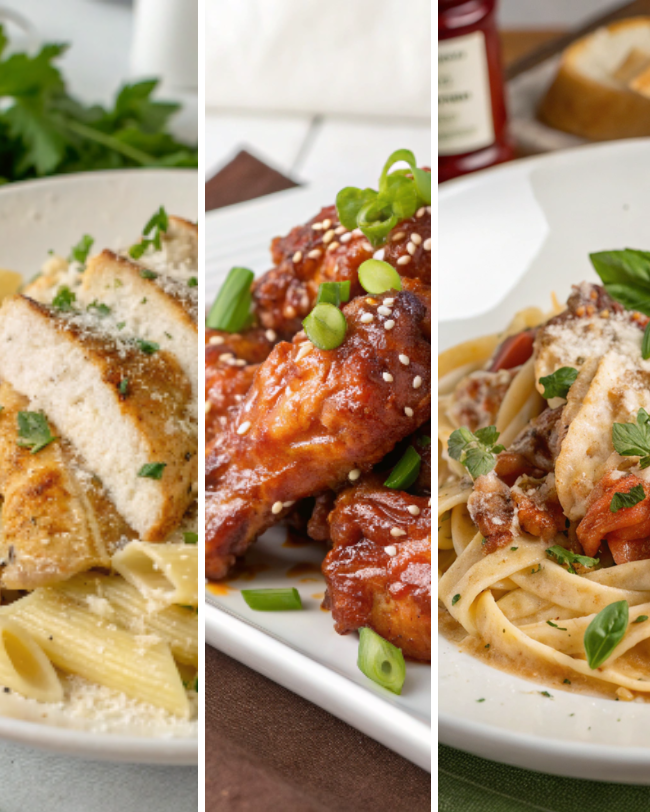
I discovered this reality myself after serving my “famous” lemon garlic chicken to friends for the third dinner party in a row. The polite smiles told me everything: it was time to expand my repertoire. What followed was a six month deep dive into the world of chicken cookery, consulting everyone from professional chefs to my 80 year old neighbor whose fried chicken has been legendary in our neighborhood since the Reagan administration.
The best chicken recipes, I learned, strike that perfect balance between convenience and flavor dishes that don’t require culinary school training but still deliver results impressive enough to make you feel like a Food Network star in your own kitchen. They’re adaptable enough to work with what you have on hand (perfect for those of us who remember the pre online grocery shopping days when you actually had to work with what was in your pantry), yet reliable enough to become family favorites.
In this article, we’ll explore everything from quick weeknight chicken dinners that can be on the table in under 30 minutes, to show stopping chicken dishes worthy of your most important gatherings. We’ll look at techniques that maximize flavor while minimizing effort, ingredient combinations that elevate ordinary chicken to extraordinary heights, and preparation methods that ensure consistently delicious results. Whether you’re cooking for picky kids who grew up on chicken nuggets, a spouse who claims to have tried “everything,” or guests you’re hoping to impress, you’ll find best chicken recipes here that will expand your culinary horizons and maybe even earn you the title of neighborhood chicken champion.
Essential Techniques for Consistently Perfect Chicken
Ask ten experienced home cooks about their chicken disasters, and you’ll hear stories ranging from bone dry chicken breasts to undercooked thighs that sent dinner guests reaching for their car keys. The truth is, chicken’s popularity sometimes masks its temperamental nature the line between perfectly cooked and disappointing is remarkably thin.
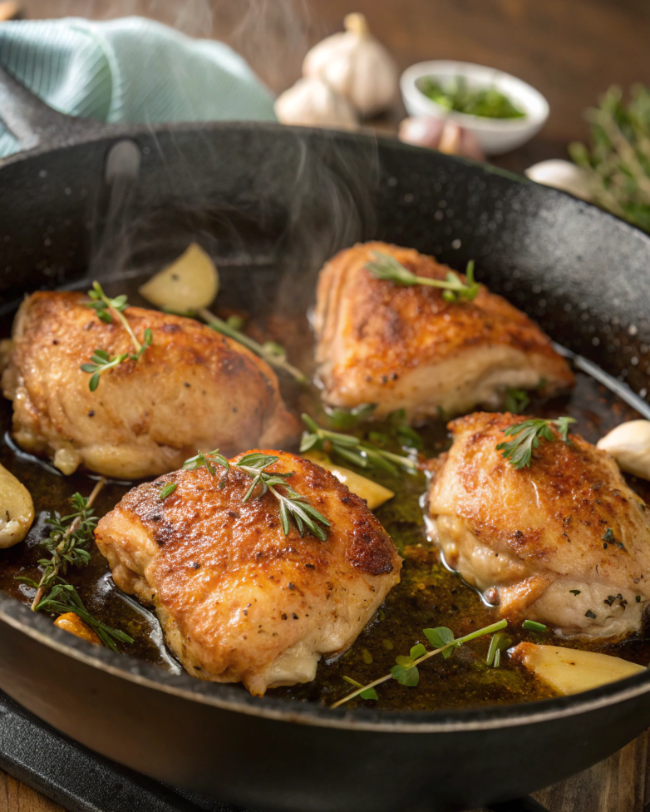
“Understanding chicken is about respecting its different parts,” explains Chef Marcus Williams, who’s been teaching home cooking classes in Chicago since 2007. “Each piece demands different treatment, different temperatures, different times.” This insight forms the foundation of mastering the best chicken recipes in your own kitchen.
The Secret to Juicy Chicken Breasts Every Time
Remember when boneless, skinless chicken breasts became the darling of health conscious cooking in the ’90s? While convenient and lean, they’re notoriously unforgiving. The absence of fat means they can go from perfect to parched in literally minutes.
The game changer technique that professional chefs have relied on for decades? Brining. This simple process involves soaking chicken in a solution of salt water (sometimes with added sugar and aromatics) before cooking. During the heyday of “low fat everything” cooking, this technique was rarely mentioned in mainstream cookbooks, but it’s absolutely transformative.
A basic brine ratio is 1/4 cup kosher salt to 4 cups water. Dissolve the salt in the water, add your chicken breasts, and refrigerate for as little as 30 minutes or up to 4 hours. Pat them dry before cooking, and you’ll notice immediately how much more forgiving they become during cooking, staying juicy even when slightly overdone.
For those evenings when you’ve forgotten to plan ahead (we’ve all been there, staring blankly into the refrigerator at 6 PM), a “dry brine” works remarkably well too. Simply season chicken breasts generously with salt and let them sit for 15 20 minutes before cooking. Even this brief treatment will improve moisture retention dramatically.
The Temperature Test: Never Guess Again
Remember the days before instant read thermometers became kitchen staples? When we’d cut into chicken to check if it was done, letting all those precious juices escape? Thankfully, those days are behind us. Investing in a good instant read thermometer is non negotiable for consistently excellent chicken.
White meat (breasts) should reach 165°F, though many chefs pull them at 160°F and let residual heat finish the job. Dark meat (thighs and legs) is more forgiving and actually benefits from higher temperatures 175°F brings out their full flavor and tenderness.
Unlocking the Potential of Chicken Thighs
While the ’80s and ’90s may have been all about the chicken breast, today’s more culinarily adventurous home cooks have rediscovered the chicken thigh. With more fat, more flavor, and a much higher tolerance for cooking times, thighs are the secret weapon in many of the best chicken recipes.
“Chicken thighs are virtually impossible to overcook,” says food writer Melissa Chang. “That forgiving nature makes them perfect for beginners, busy parents, or anyone who doesn’t want to hover over their stove.”
Boneless, skinless thighs cook quickly and absorb flavors beautifully, making them ideal for stir fries, quick curries, or weeknight pasta dishes like Garlic Parmesan Chicken Pasta. Bone in, skin on thighs take longer to cook but reward you with crispy skin and deeper flavor perfect for braised dishes or simple roasts with herbs and lemon.
For those who grew up during the fat phobic era of American cooking and still feel hesitant about thighs, consider this: the difference in calories between a chicken breast and thigh is far less than most people assume, and the satisfaction factor of the more flavorful cut often means you’re content with a smaller portion.
The Whole Bird: Mastering the Classic Roast Chicken
There’s something almost ceremonial about presenting a whole roasted chicken at the dinner table. It harkens back to Sunday dinners of decades past, when families gathered around a weekly feast. Yet many home cooks even those who regularly prepare elaborate meals approach whole chicken with trepidation.
The technique that’s revolutionized home roasting is spatchcocking (or butterflying) removing the backbone so the chicken lies flat. This method, which became wildly popular among home cooks around 2010, reduces cooking time by about 30% and ensures even cooking throughout.
“When you spatchcock, you’re essentially transforming the bird’s geometry,” explains butcher Ray Venezia. “Every part of the chicken is now roughly the same distance from the heat source, which means everything cooks evenly.”
To spatchcock a chicken, you’ll need kitchen shears. Simply cut along both sides of the backbone to remove it completely, then flip the chicken and press firmly on the breastbone to flatten it. Season generously, and roast at 425°F for about 45 minutes (for a 4 pound bird). The result is crispy skin all over and perfectly cooked meat throughout a far cry from the dried out breasts and undercooked thighs that plagued roast chickens of family dinners past.
Global Flavor Profiles That Transform Ordinary Chicken
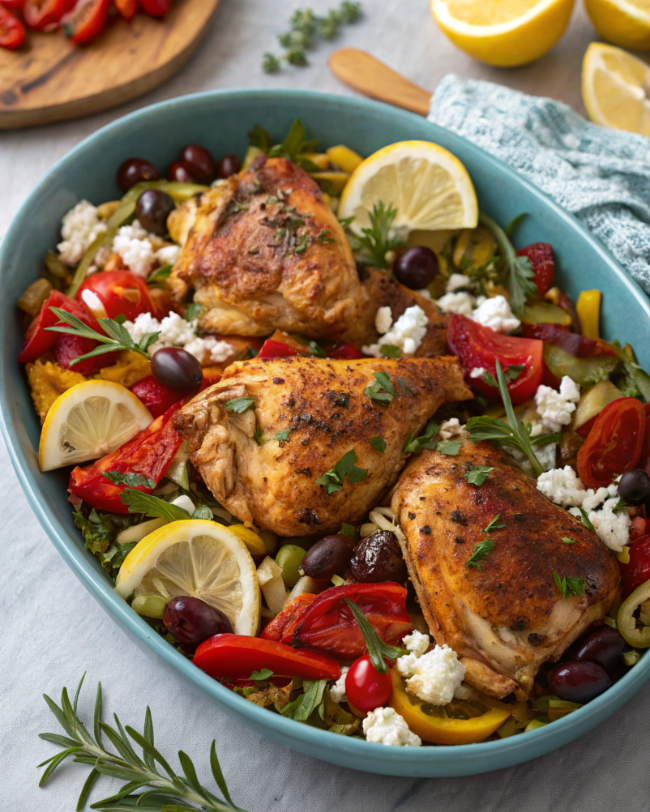
One of the most beautiful aspects of chicken is its chameleon like ability to absorb and showcase flavors from around the world. While many of us grew up with chicken recipes limited to a few American classics fried chicken, roast chicken with potatoes, maybe the occasional attempt at coq au vin if our parents were feeling fancy today’s home cooks have a global playground of flavors at their disposal.
“Chicken is the ultimate blank canvas,” notes food anthropologist Dr. Sandra Lee. “Every culture has found ways to make this protein shine, and now home cooks can travel the world without leaving their kitchens.”
Mediterranean Magic: Herbs, Lemons, and Olives
The Mediterranean approach to chicken relies heavily on fresh herbs, bright citrus, and quality olive oil ingredients that have become pantry staples for many American home cooks since the Mediterranean diet began gaining popularity in the 1990s.
Greek style lemon and oregano chicken uses a simple marinade of lemon juice, olive oil, garlic, and oregano to transform ordinary chicken thighs into a weeknight meal that tastes like a vacation. The key is allowing enough marinating time ideally 4 8 hours and finishing with plenty of fresh herbs after cooking.
For a more complex flavor profile, Spanish inspired chicken with olives and smoked paprika delivers deep, smoky notes balanced by the brine of good quality olives. This one pan dish creates a sauce so delicious you’ll want plenty of crusty bread on hand a perfect example of how the best chicken recipes often create their own accompaniment.
Italian cuisine offers countless approaches to chicken, from the simple (chicken piccata with lemon and capers) to the hearty (cacciatore with tomatoes). The common thread is usually a matter of technique: browning the chicken properly before adding aromatics and liquids, allowing flavors to build and meld.
The Classic Chicken Piccata Updated
While traditional chicken piccata calls for pounding chicken breasts thin, a more modern approach that preserves juiciness is to slice chicken breasts horizontally into two thinner pieces. Dredge lightly in flour seasoned with salt and pepper, then sauté until golden but not quite cooked through. Remove from the pan, add minced shallots and garlic, deglaze with lemon juice, add capers, then return the chicken to the pan to finish cooking in the sauce. A final swirl of butter creates a silky emulsion that clings beautifully to the chicken. The entire process takes less than 30 minutes but delivers restaurant quality results.
Asian Inspired Flavor Bombs: Sweet, Spicy, and Savory
If your introduction to Asian chicken dishes was limited to sweet and sour chicken from the local takeout place in the ’80s, you’re in for a revelation. The continent’s diverse cuisines offer some of the best chicken recipes imaginable, many of which have become accessible to American home cooks as ingredients like fish sauce, gochujang, and Sichuan peppercorns have become widely available.
Korean style gochujang chicken brings the perfect balance of sweet, spicy, and savory. This vibrant chili paste has gained tremendous popularity in American kitchens over the past decade, moving from specialty stores to mainstream supermarket shelves. Mixed with soy sauce, honey, ginger, and garlic, it creates a glaze that caramelizes beautifully on chicken thighs cooked under the broiler or on the grill.
For those who recall when “stir fry” meant a bag of frozen vegetables and a bottle of teriyaki sauce, authentic Chinese techniques offer a world of improvement. The key secret many home cooks miss is velveting coating thinly sliced chicken breast in a mixture of cornstarch, egg white, briefly blanching in oil or water. This technique, which dates back centuries in Chinese cooking, creates remarkably tender chicken that retains its moisture even during the high heat cooking process.
The New American Classics: BBQ Reimagined
Few things feel as quintessentially American as BBQ chicken on the grill during a summer gathering. Yet many of us have memories of chicken charred beyond recognition on the outside while remaining dangerously undercooked near the bone a common pitfall of the “slather with sauce and hope for the best” approach many of our parents took.
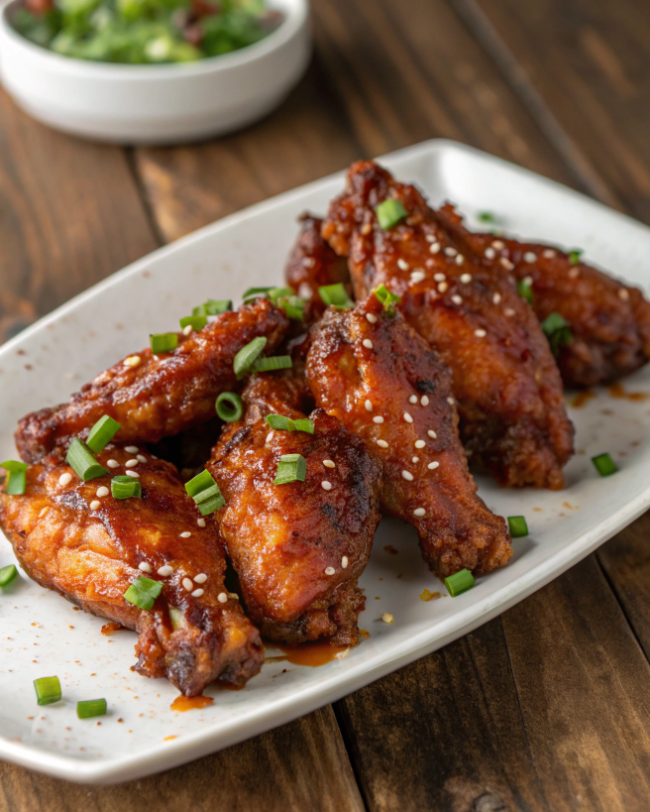
Today’s best BBQ chicken recipes rely on more nuanced techniques, many borrowed from competition barbecue circuits that gained popularity in the 1990s and early 2000s. The game changer is the two zone fire keeping one side of your grill hot and the other side cooler. This allows you to sear the chicken over high heat then move it to the cooler side to finish cooking indirectly, avoiding the burnt/raw conundrum entirely.
The sauce application timing has evolved as well. “Sugar burns at relatively low temperatures,” explains pitmaster Jerome Franklin. “When you sauce too early, you’re guaranteed carbonized chicken.” The new rule of thumb: apply sauce only during the final 5 10 minutes of cooking, building up thin layers for depth of flavor without burning.
For a modern spin on classic BBQ chicken that will make you the star of any cookout, try a coffee rubbed BBQ Chicken that nods to Texas brisket traditions. The rub a mixture of finely ground coffee, brown sugar, smoked paprika, garlic powder, and salt creates a deeply flavorful crust that complements rather than competes with your favorite sauce. Apply to bone in, skin on thighs, cook using the two zone method, and sauce only at the end.
Weeknight Heroes: 30 Minute Best Chicken Recipes That Deliver
Let’s face it as much as we might aspire to spend hours crafting culinary masterpieces, most weeknights find us scrambling to get something decent on the table between work deadlines, kids’ activities, and the siren call of delivery apps. The good news? Some of the best chicken recipes are specifically designed for these time crunched scenarios.
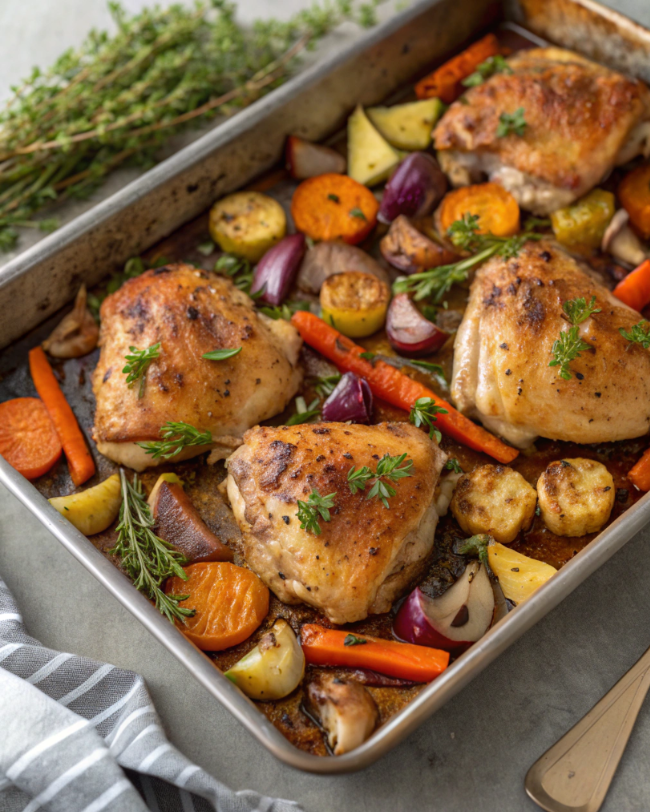
“The key to great weeknight cooking isn’t cutting corners it’s strategic cooking,” says meal planning expert Toni Morrison (no relation to the author). “It’s about understanding which techniques and ingredient combinations deliver maximum flavor with minimum time investment.”
One Pan Wonders: Minimal Cleanup, Maximum Flavor
The sheet pan dinner revolution that took hold in the mid 2010s wasn’t just a passing trend it was a legitimate cooking breakthrough for busy households. By arranging chicken and complementary vegetables on a single sheet pan, seasoning thoughtfully, and letting the oven do the work, you can create complete meals with virtually no active cooking time.
The secret to successful sheet pan dinners lies in understanding cooking times and cutting ingredients accordingly. Chicken thighs pair beautifully with longer cooking vegetables like carrots, potatoes, and Brussels sprouts. Faster cooking chicken breasts work well with vegetables like asparagus, bell peppers, and zucchini. To ensure everything finishes at the same time, give longer cooking items a head start or cut them smaller than quick cooking ingredients.
For a Mediterranean inspired sheet pan chicken that consistently earns rave reviews, toss bone in, skin on chicken thighs with halved baby potatoes, quartered artichoke hearts, halved cherry tomatoes, and pitted kalamata olives. Season with olive oil, lemon juice, dried oregano, garlic powder, salt, and pepper. Roast at 425°F for about 35 minutes, then sprinkle with crumbled feta cheese before serving.
Skillet Sensations: The Garlic Parmesan Chicken Pasta Revolution
If you came of age in the era when “pasta night” meant jarred sauce poured over dry noodles, prepare to have your world rocked by modern one skillet pasta dishes. These revolutionary recipes cook the pasta directly in the sauce, creating a creamy texture through the released starch and minimizing both cooking time and dishwashing.
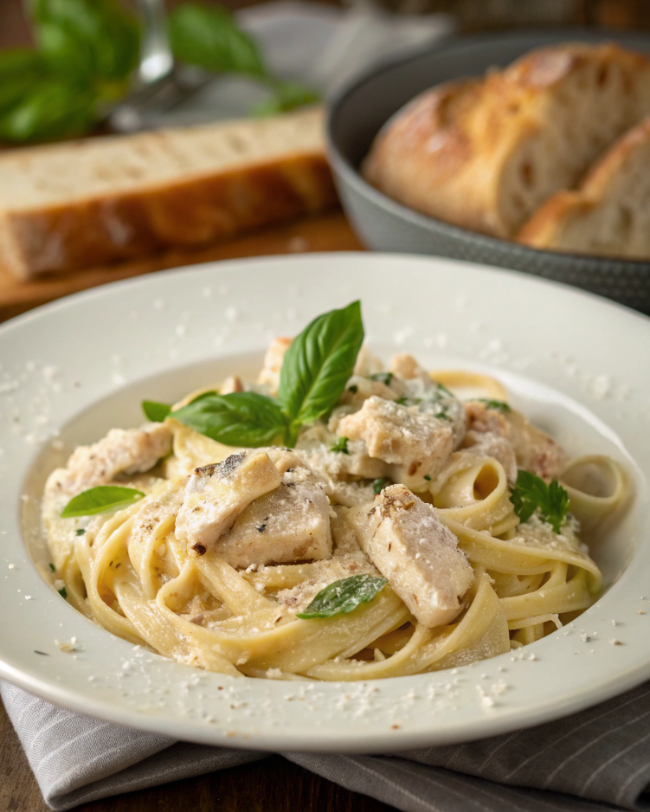
Garlic Parmesan Chicken Pasta has become particularly popular, offering a creamy, satisfying meal that feels indulgent while being relatively simple to prepare. The technique begins with browning bite sized pieces of chicken in a large skillet, then adding aromatics like garlic and shallots. The magic happens when you add chicken broth, cream, and uncooked pasta to the same pan, allowing everything to cook together in about 10 minutes. A generous helping of Parmesan cheese creates a silky sauce that clings to every bite.
For those looking to reduce dairy, an equally delicious alternative uses the starchy pasta cooking water combined with a little butter or olive oil to create an emulsified sauce that feels creamy without actual cream. Add fresh herbs, lemon zest, and a sprinkle of good cheese at the end, and you’ll have a lighter version that sacrifices nothing in flavor.
Upgraded Stir Fries: Beyond the Frozen Vegetable Medley
If your stir fry game hasn’t evolved since college days, you’re missing out on one of the quickest routes to excellent chicken dinners. Modern approaches to stir frying focus on high quality ingredients, proper preparation, and understanding the importance of wok hei that distinctive flavor that comes from properly high heat cooking.
While a traditional wok on a high BTU burner delivers the best results, a large cast iron skillet on your hottest burner works remarkably well for home stir fries. The key is to get it ripping hot before adding your oil, then cooking in small batches to maintain temperature.
For chicken specifically, the velveting technique mentioned earlier makes a world of difference. Even a simplified version tossing thinly sliced chicken breast with a mixture of cornstarch, a splash of soy sauce, and a drizzle of oil will yield significantly more tender results than untreated chicken.
A stir fry worth adding to your regular rotation is ginger scallion chicken with snap peas and water chestnuts. The combination of crisp vegetables, tender chicken, and aromatic sauce creates a balanced meal that comes together in less time than delivery would take. The key is preparing all ingredients before heating your pan, as the actual cooking process takes just minutes.
Entertaining with Chicken: Impressive Yet Approachable Feasts
There was a time when serving chicken at a dinner party might have seemed uninspired the safe choice rather than the special occasion food. Those days are decidedly behind us, as some of the best chicken recipes now take center stage at gatherings ranging from casual dinner parties to milestone celebrations.
“The beauty of chicken for entertaining is its universal appeal,” notes cookbook author Sophia Martinez. “Unlike more polarizing proteins, chicken pleases almost everyone. The trick is in the presentation and preparation elevating it beyond the everyday while keeping it accessible.”
The Viral Sensation: Why Marry Me Chicken Pasta Earned Its Name
Few chicken dishes have captured the collective imagination like “Marry Me Chicken Pasta,” which began circulating on food blogs around 2019 and exploded on social media platforms in the following years. The premise is simple but compelling: a chicken dish so delicious your partner will propose after tasting it.

While the original version featured chicken breasts in a sun dried tomato cream sauce, countless variations have emerged. The pasta version Marry Me Chicken Pasta has become particularly popular for entertaining, offering a one pot meal that’s both impressive and relatively simple to prepare.
The dish features chicken thighs browned until golden, then simmered in a decadent sauce of heavy cream, sun dried tomatoes, garlic, herbs, and plenty of Parmesan cheese. Short pasta like rigatoni or penne is added directly to the sauce to cook, absorbing flavors while releasing starches that further thicken the sauce. The result is rich, creamy, and undeniably crave worthy perfect for dinner parties where you want to impress without spending the entire evening in the kitchen.
For a lighter spin that maintains the wow factor, some clever cooks have substituted part of the cream with chicken stock and added a generous helping of fresh spinach at the end, creating a more balanced but equally delicious meal. Regardless of which version you choose, this dish has earned its reputation as a crowd pleaser worthy of special occasions.
Crowd Pleasing Platters: Family Style Feasts
There’s something undeniably convivial about family style dining large platters passed around the table, each person building their perfect plate. This approach works beautifully for entertaining with chicken, allowing you to create impressive presentations without the pressure of plating individual servings.
A Mediterranean inspired chicken platter makes for a showstopping centerpiece. Arrange golden brown, crispy skinned chicken pieces over a bed of roasted vegetables, scatter with olives, fresh herbs, and lemon wedges, then drizzle with a simple yogurt sauce. The colors and textures create visual appeal while allowing guests to select their favorite pieces.
For those who recall the elaborate spread of appetizers that defined ’80s and ’90s entertaining, a deconstructed chicken dish offers a modern twist on the concept. Spice rubbed chicken skewers arranged around a trio of complementary sauces perhaps a herbaceous green sauce, a smoky red pepper aioli, and a cooling yogurt cucumber blend create an interactive dining experience that encourages conversation.
The Unexpected Star: Whole Chicken Presentations
When planning a dinner party, many hosts gravitate toward individual chicken breasts or thighs for ease of serving. However, whole chicken presentations offer dramatic flair while often requiring less actual cooking finesse.
The salt crusted whole chicken has gained popularity in recent years, offering both theatrical presentation and remarkably juicy meat. The chicken is completely encased in a salt dough (often mixed with herbs and lemon zest), then baked. At the table, the crust is cracked open to reveal the perfectly cooked bird inside, creating a memorable moment for guests. While visually impressive, this method is actually quite forgiving for the cook.
For those who prefer a more straightforward approach, the spatchcocked chicken mentioned earlier makes an excellent centerpiece. Roasted over a bed of bread cubes (which soak up all the flavorful drippings), sliced oranges, and herbs, then presented whole before carving at the table, it offers rustic elegance perfect for gatherings of close friends or family.
The Science of Flavor: Building Better Chicken Dishes
Understanding the science behind what makes chicken dishes delicious allows home cooks to move beyond slavishly following recipes to creating their own best chicken recipes. This knowledge much of which has become more accessible to home cooks through food science writers like Harold McGee and television programs like Good Eats in the late ’90s and early 2000s empowers you to cook more confidently and creatively.
“Once you understand the ‘why’ behind cooking techniques, you can adapt any recipe to suit your taste and available ingredients,” explains food science educator Dr. Rachel Kim. “With chicken specifically, understanding a few key principles can transform your cooking.”
The Maillard Reaction: Browning Your Way to Flavor
If you’ve ever wondered why a pale, poached chicken breast tastes so different from a golden brown roasted one, you can thank the Maillard reaction a complex chemical process that occurs when proteins and sugars are heated together. This reaction creates hundreds of new flavor compounds, which is why properly browned chicken has such complex, savory flavor.
To maximize the Maillard reaction in your cooking:
- Ensure chicken is thoroughly dried before applying heat (moisture is the enemy of browning)
- Use high enough heat but not so high that the outside burns before the inside cooks
- Don’t overcrowd the pan, which drops temperature and causes steaming rather than browning
- Consider adding a touch of honey or sugar to marinades to encourage browning
This science explains why so many professional chefs insist on getting a good sear on chicken before adding liquids for braising or simmering. Those first few minutes of contact with a hot surface develop flavors that cannot be achieved any other way.
Fat: The Flavor Carrier You Need
During the fat phobic decades of American cooking (roughly the ’80s through early 2000s), many chicken recipes emphasized reducing or eliminating fat. While well intentioned from a health perspective, this approach often resulted in dishes lacking depth and satisfaction. Today’s more balanced understanding recognizes fat’s crucial role in flavor development and delivery.
Fat serves as a carrier for many flavor compounds, particularly those that aren’t water soluble. This is why chicken skin is so delicious it’s not just the crispy texture, but also its ability to capture and deliver flavor. Even in leaner preparations, a judicious amount of fat makes a significant difference.
Consider the difference between a chicken breast poached in plain water versus one poached in broth with a swirl of olive oil. The latter will taste more flavorful even if the seasonings are identical, because the fat helps carry those flavors to your taste receptors.
This principle explains why dishes like the viral sensation Marry Me Chicken Pasta work so well the combination of chicken thighs (with their higher fat content) and cream creates multiple vehicles for delivering flavor to your palate.
Umami: The Fifth Taste in Chicken Cookery
When many of us were growing up, we learned about four basic tastes: sweet, sour, salty, and bitter. Today, umami the savory, meaty taste is widely recognized as the fifth fundamental taste. Understanding how to boost umami has revolutionized many chicken recipes, particularly those aimed at creating deeply satisfying flavors without excessive salt or fat.
Chicken itself contains natural umami compounds, but these can be significantly enhanced through various techniques:
- Brown chicken pieces thoroughly before braising (the Maillard reaction creates umami compounds)
- Incorporate umami rich ingredients like mushrooms, tomatoes, Parmesan cheese, or soy sauce
- Consider small amounts of anchovy paste or fish sauce these add depth without fishiness
- Use properly made stock as a cooking liquid rather than water
A perfect example of umami boosting in action is the difference between a basic chicken soup and a deeply flavored chicken ramen. The latter typically includes multiple umami enhancing techniques: roasted chicken, mushrooms, properly prepared stock, and often a touch of miso or soy sauce. The result isn’t just “more flavorful” it specifically satisfies that deeply savory craving that makes certain foods so crave worthy.
From Leftovers to Legends: Transforming Yesterday’s Chicken
In an era increasingly concerned with food waste and sustainability, mastering the art of repurposing leftover chicken has become more important than ever. Yet this isn’t just about responsible consumption some of the best chicken recipes were specifically developed to transform leftovers into something new and exciting.
“There’s a reason so many cultures have developed incredible dishes specifically designed for leftover chicken,” notes culinary historian Patricia Johnson. “These recipes often have deeper flavor profiles than their first round counterparts because the chicken has had time to absorb seasonings, and the dishes frequently incorporate additional flavor boosting techniques.”
Beyond the Sandwich: Creative Uses for Leftover Chicken
While a chicken sandwich might be the most obvious use for leftovers (and there’s nothing wrong with that classic choice), consider these more creative options that transform yesterday’s dinner into something entirely new:
Chicken pot pie with a modern twist uses shredded leftover chicken combined with whatever vegetables you have on hand. Rather than the heavy cream sauce of traditional recipes, try a lighter velouté made with good stock and just a touch of cream. For the crust, puff pastry provides impressive results with minimal effort a far cry from the soggy frozen pot pies many of us remember from childhood.
Quick chicken enchiladas use corn tortillas dipped in red or green sauce, wrapped around shredded chicken mixed with sautéed onions and peppers, then topped with more sauce and cheese before a brief trip to the oven. This dish transforms plain leftover chicken into something so flavorful guests will never suspect they’re eating repurposed ingredients.
For those who grew up when “bring your lunch to work” meant sandwiches or expensive microwave meals, grain bowls have revolutionized the leftovers game. A base of quinoa, farro, or brown rice topped with shredded leftover chicken, raw and roasted vegetables, a punchy dressing, and crunchy toppings creates a lunch that colleagues will envy. The different textures and temperatures make these bowls far more satisfying than the monotonous leftovers of previous generations.
Make Ahead Marvels: Chicken Dishes That Improve With Time
Certain chicken dishes don’t just tolerate being made ahead they actually improve with a day or two in the refrigerator as flavors meld and deepen. These recipes are perfect for busy households, allowing you to cook when you have time and enjoy the results when you don’t.
Chicken curry, whether Indian, Thai, or Caribbean inspired, typically tastes better the second or even third day. The complex spice mixtures have time to permeate the meat fully, and the sauce often thickens to a more satisfying consistency. Preparing a large batch on Sunday for Monday and Tuesday dinners isn’t just convenient it’s culinarily superior.
Chicken soups and stews follow the same principle. Many people who grew up with home cooked meals remember their parents or grandparents insisting that soup was always better the next day and food science confirms this folk wisdom. The flavors meld, the chicken becomes more tender as it continues to absorb liquid, and the overall profile becomes more harmonious.
For entertaining, this make ahead quality is particularly valuable. Dishes like coq au vin or chicken tagine can be prepared completely the day before your gathering, then simply reheated. This not only reduces day of stress but actually results in a more delicious meal the definition of a win win.
Conclusion
Through this exploration of the best chicken recipes and techniques, we’ve traveled from essential cooking methods to global flavors, from quick weeknight dinners to impressive entertaining options. The humble chicken so often taken for granted reveals itself as one of the most versatile, adaptable proteins in our culinary arsenal.
What makes these recipes “the best” isn’t just their flavor profiles or their visual appeal, though those aspects matter tremendously. It’s their ability to fit into our real lives to nourish our families on busy weeknights, to bring friends together around our tables, to connect us to culinary traditions both familiar and new. The best chicken recipes become part of our personal cooking narratives, dishes we return to again and again because they deliver not just nutrition but satisfaction and joy.
As you incorporate these techniques and ideas into your own cooking practice, remember that true mastery comes through experimentation and personalization. The chicken piccata that becomes your signature dish might include a splash of white lemon where someone else’s uses chicken stock. Your family’s favorite BBQ chicken might feature a spice rub with a hint of coffee while your neighbor’s relies on brown sugar and smoked paprika. These variations aren’t deviations from “the best” they’re what make cooking a living, evolving craft rather than a static set of instructions.
Perhaps most importantly, the journey toward mastering chicken cookery connects us to generations of home cooks who came before us. From grandmothers who judged a chicken’s doneness by feel to parents who carefully followed the instructions on the back of cream of mushroom soup cans to create family favorite casseroles, we’re part of a long tradition of nourishing others through simple ingredients transformed by care and attention.
What chicken dish will you tackle next? Whether it’s perfecting that tricky roast chicken, exploring the flavors of a cuisine new to your kitchen, or simply elevating your weeknight dinner rotation with Garlic Parmesan Chicken Pasta or a version of the famous Marry Me Chicken, the possibilities are as endless as they are delicious. Your best chicken recipe might be just one meal away.
